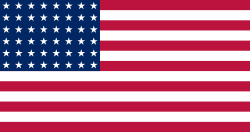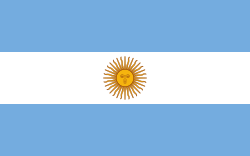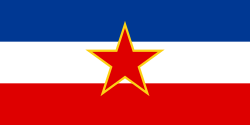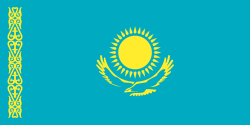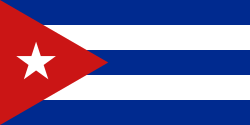James Boyd (Boxer)
| James Boyd | |||||||
|---|---|---|---|---|---|---|---|
| Daten | |||||||
| Geburtsname | James Felton Boyd | ||||||
| Geburtstag | 30. November 1930 | ||||||
| Geburtsort | Rocky Mount (North Carolina) | ||||||
| Todestag | 25. Januar 1997 | ||||||
| Todesort | Baltimore (Maryland) | ||||||
| Nationalität | |||||||
| Gewichtsklasse | Halbschwergewicht | ||||||
| Medaillenspiegel | |||||||
| |||||||
| |||||||
James Felton „Jim“ Boyd (* 30. November 1930 in Rocky Mount, North Carolina; † 25. Januar 1997 in Baltimore, Maryland) war ein US-amerikanischer Boxer im Halbschwergewicht (75 bis 81 kg).
Boxkarriere
James Boyd trat 1947 in die United States Army ein und wurde in Fort Benning stationiert, wo er mit dem Boxen begann. 1955 und 1956 wurde er All-Army sowie All-Service Champion und gewann 1956 auch die National Golden Gloves, wo er im Finale Ernie Terrell besiegte.
Bei den 16. Olympischen Sommerspielen 1956 in Melbourne, gewann er die Goldmedaille. Er besiegte dabei im Viertelfinale den Argentinier Rodolfo Luciano Díaz, im Halbfinale Romualdas Murauskas aus der Sowjetunion und im Finale den Rumänen Gheorghe Negrea.
1959 wurde er Profiboxer und bestritt bis September 1962 sieben Kämpfe, darunter zwei Siege und drei Unentschieden. Er verstarb 1997 an den Folgen einer Krebserkrankung.
Weblinks
- Robert Hilson Jr.: James F. Boyd, 67, boxer who won Olympic gold in 1956 Games in Australia. In: The Baltimore Sun. 30. Januar 1997, abgerufen am 17. Februar 2014.
- 16. Olympic Games 1956 auf Amateur-Boxing.strefa.pl
- James Boyd (Boxer) in der BoxRec-Encyclopaedia
- James Boyd in der BoxRec-Datenbank
- James Boyd in der Datenbank von Olympedia.org (englisch)
- Jim Boyd auf der Liste der Golden Gloves Champions Webseite Golden Gloves
| Personendaten | |
|---|---|
| NAME | Boyd, James |
| ALTERNATIVNAMEN | Boyd, James Felton; Boyd, Jim |
| KURZBESCHREIBUNG | US-amerikanischer Boxer |
| GEBURTSDATUM | 30. November 1930 |
| GEBURTSORT | Rocky Mount (North Carolina) |
| STERBEDATUM | 25. Januar 1997 |
| STERBEORT | Baltimore |
Auf dieser Seite verwendete Medien
Pictograms of Olympic sports - Boxing. This is unofficial sample picture. Images of official Olympic pictograms for 1948 Summer Olympics and all Summer Olympics since 1964 can be found in corresponding Official Reports.
Autor/Urheber: B1mbo, Lizenz: CC BY-SA 2.5
Zeichnung einer Goldmedaille, basierend auf Olympic rings.svg.
Autor/Urheber: B1mbo, Lizenz: CC BY-SA 2.5
Zeichnung einer Silbermedaille, basierend auf Olympic rings.svg.
Autor/Urheber: B1mbo, Lizenz: CC BY-SA 2.5
Zeichnung einer Bronzemedaille, basierend auf Olympic rings.svg.
Olympic Rings without "rims" (gaps between the rings), As used, eg. in the logos of the 2008 and 2016 Olympics. The colour scheme applied here was specified in 2023 guidelines.
Olympic Rings without "rims" (gaps between the rings), As used, eg. in the logos of the 2008 and 2016 Olympics. The colour scheme applied here was specified in 2023 guidelines.
US Flag with 48 stars. In use for 47 years from July 4, 1912, to July 3, 1959.
Flagge des Vereinigten Königreichs in der Proportion 3:5, ausschließlich an Land verwendet. Auf See beträgt das richtige Verhältnis 1:2.
Flagge des Vereinigten Königreichs in der Proportion 3:5, ausschließlich an Land verwendet. Auf See beträgt das richtige Verhältnis 1:2.
Flag of South Africa, used between 1928 and 1982. It is identical to the 1982 to 1994 version except that the shade of blue is darker. It is also known as the "Oranje-Blanje-Blou".
Flag of South Africa, used between 1928 and 1982. It is identical to the 1982 to 1994 version except that the shade of blue is darker. It is also known as the "Oranje-Blanje-Blou".
Flag of Italy from 1946 to 2003, when exact colors were specified.
(c) I, Cmapm, CC BY-SA 3.0
The flag of the Soviet Union (1955-1991) using a darker shade of red.

(c) I, Cmapm, CC BY-SA 3.0
The flag of the Soviet Union (1955-1991) using a darker shade of red.

Flag of the Socialist Federal Republic of Yugoslavia (1946-1992).
The design (blazon) is defined in Article 4 of the Constitution for the Republic of Yugoslavia (1946). [1]






